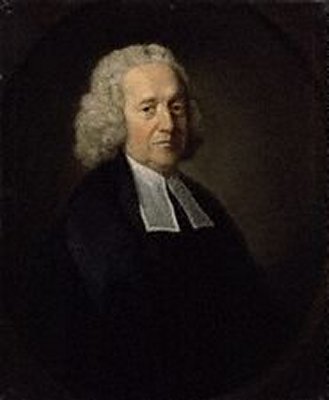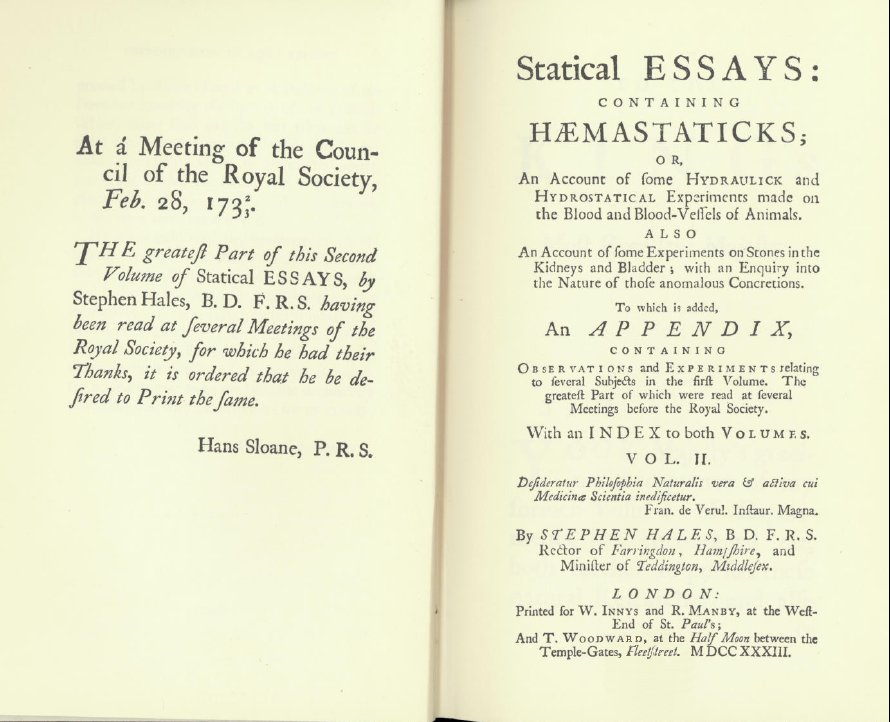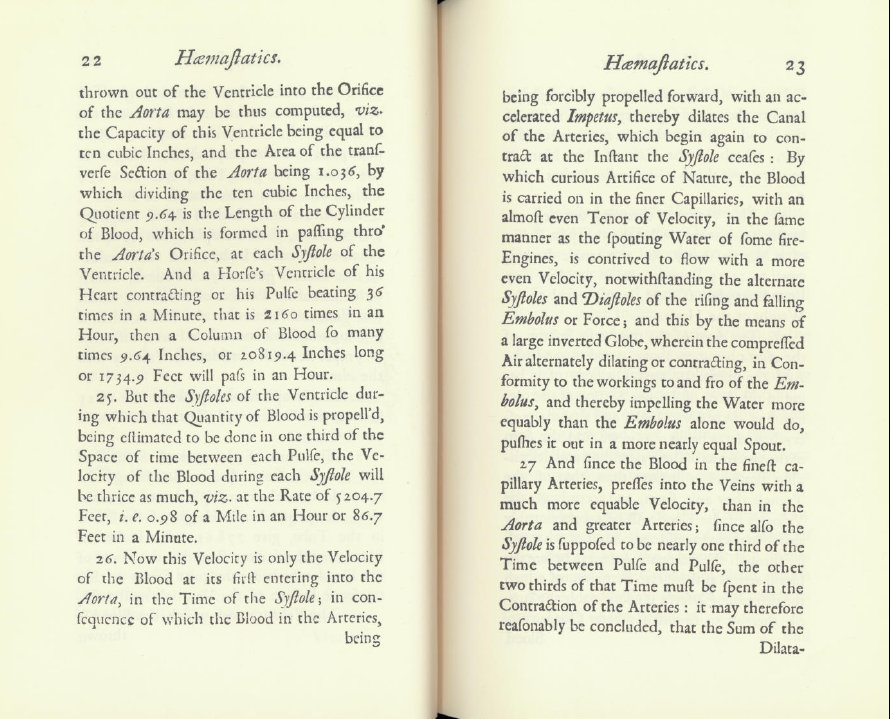

The Reverend Stephan Hales (1677–1746) was from a distinguished Kentish family. He entered Bene't College (which later became Corpus Christi College) in 1696. As an ordinand he studied theology primarily but was also tutored in classics, mathematics, science and philosophy. He became a fellow of the college in 1703 and, in the same year, befriended William Stuckley who had just arrived as an undergraduate to study medicine. Together they developed an interest in experimental biology and anatomy that remained with Hales throughout his life. In 1709 Hales was appointed Perpetual Curate of the parish of Teddington in Middlesex, a post that he retained until his death 52 years later.
Hales was assiduous in his pastorial duties, expending much of his energy on the relief of paupers in his village. Teddington at the time was a rural village and Hales developed an understanding with his parishoners that they should inform them whenever they were about to put down an animal so that he could use it in his studies. He was a friend of Alexander Pope who lived briefly in Teddington and was appalled by is vivisections. His experiments were frequently a part of the gossip of his neighbours and were referred to in a poem entitled The Boat by the Rev. Thomas Twining:
Green Teddington's serene retreat
For Philosophic studies meet,
Where the good Pastor Stephen Hales
Weighed moisture in a pair of scales,
To lingering death put Mares and Dogs,
And stripped the Skins from living Frogs,
Nature, he loved, her Works intent
To search or sometimes to torment.
Hales' experiments were better received by the Royal Society where he attended his first meeting in 1717. He was elected a Fellow the following year having been proposed by his old friend William Stuckley. In 17330, a collection of his papers were published by the Royal Society entitled Statical Essays: containing Haemastaticks; or An Account of some Hydraulick and Hydrostatical Experiments mad on the Blood and Blood-Vessels of Animals, also An Account of some Experiments on Stones in the Kidneys and Bladder, with an Enquiry into the Natue of those anomalous Concretions. This book appeared twenty-two years after his first experiment measuring blood pressure.

Many of Hales' experiments concerned the cardiovascular system and he was the first person to accurately measure blood pressure in vivo in experiments on horses. In one experiment on a 10-year old mare he measured the venous and arterial pressure (using a goose wind pip as a catheter), cast the left ventricle with beeswax and commented on the effect of the compliance of the arteries on blood flow through the cappilaries.
In Experiment 3, he discusses the velocity at which blood is ejected from the heart of a 10-year-old mare and how it is altered by the elasticity of the arteries:
...the velocity of the blood during each systole will be thrice as much, viz. at the rate of 5204.7 feet, i.e. 0.98 of a mile in an hour or 86.7 feet in a minute [0.44 m/s]. Now this velocity is only the velocity of the blood at its first entering into the aorta, in the time of the systole; in consequence of which the blood in the arteries, being forcibly propelled forward, with an accelerated impetus, thereby dilates the canal of the arteries, which begin again to contract at the instant the systole ceases: by which curious artifice of nature, the blood is carried on in the finer capillaries, with an almost even tenor of velocity, in the same manner as the spouting water of some fire-engines, is contrived to flow with a more even velocity, notwithstanding the alternate systoles and diastoles of the rising and falling embolus or force; and this by the means of a large inverted globe, wherein the compressed air alternately dilating or contracting, in conformity to the workings to and fro of the embolus, and thereby impelling the water more equably than the embolus alone would do, pushes it out in a more nearly equal spout.

As we have seen, the idea of the cushioning effect of arterial compliance did not originate with Hales. Borelli discussed the phenomenon approximately 50 years earlier in his book De Motu Animalium and Hales would certainly have been familiar with Borelli's work. It was, however, the comparison of the effect in arteries to the effect of an air chamber in fire engine pumps that caught the eye of Otto Frank who described it as the Windkessel effect in 1899 ('Windkessel' is German for 'air chamber'). Because of Frank's work, the phenomenon is universally known as the Windkessel effect.